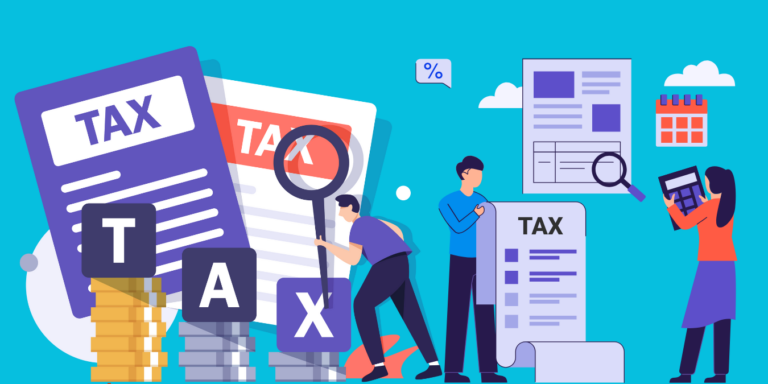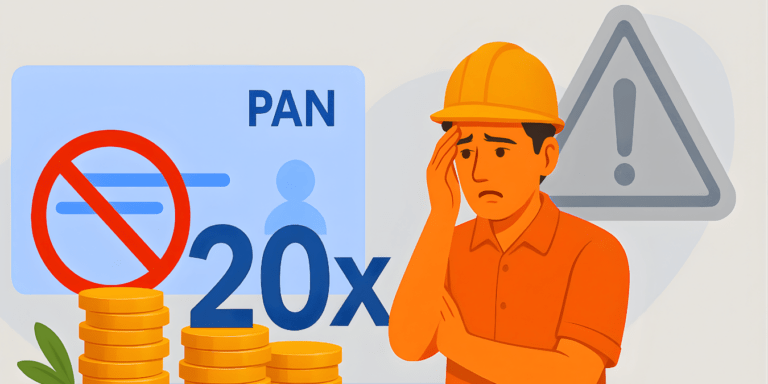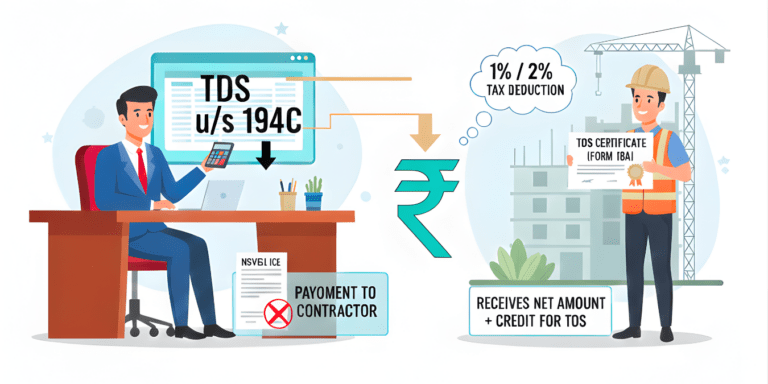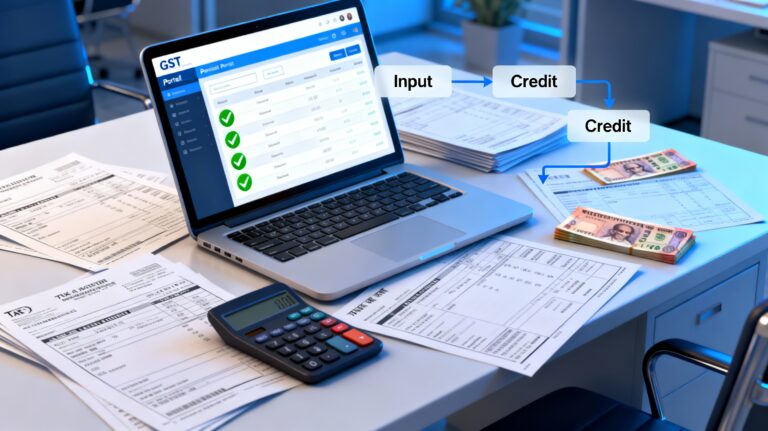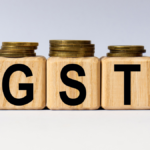
How Banks Report Your Transactions to the Income Tax Department in 2025—and Smart Ways to Safeguard Yourself
Did you know your ₹10 lakh deposit in 2025 could silently trigger an Income Tax notice? Banks now report every major transaction—savings, credit cards, even jewellery buys—via SFT to the taxman. One mismatch in your AIS can cost lakhs in penalties! Uncover how India’s 2025 tax laws track your finances, why PAN links every move, and 6 pro tips to stay penalty-free.
Every financial move, from a lucrative investment to a sudden cash deposit, leaves digital footprints. In 2025, India’s Income Tax Department is closer than ever to these trails, thanks to sophisticated banking regulations and analytics. If you’ve ever wondered how your transactions reach the taxman’s radar—and how to avoid costly mistakes without running afoul of the law—this post unpacks it all. Drawing from an Indian perspective, we’ll dive into the mechanisms, thresholds, and proactive strategies to keep your finances compliant and stress-free.
Key Takeaways
- Banks and financial institutions must report high-value transactions to the Income Tax Department via the Specified Financial Transaction (SFT) system, directly linked to your PAN and reflected in your Annual Information Statement (AIS).
- Exceeding thresholds like ₹10 lakh in a savings account, ₹50 lakh in a current account, or ₹1 lakh on a credit card in cash makes reporting mandatory and exposes mismatches in your tax returns to heavy scrutiny and penalties.
Taxpayers can shield themselves by matching all records with AIS/Form 26AS, declaring all high-value transactions, and responding promptly to any e-Campaign notices
Why Every Major Bank Transaction Is Under the Scanner
The Indian Banking Revolution, Digitized
Indian banks in 2025 are interconnected with the Income Tax Department via robust data pipelines. Mandated by Section 285BA and Rule 114E of the Income Tax Act, every major institution files a detailed Statement of Financial Transactions (SFT) report annually, linking every significant transaction to your PAN. This expanded regime covers savings and current accounts, credit card activity, mutual funds, property, and even travel spends. With digitization at its peak, tools like the Annual Information Statement (AIS) and Form 26AS provide real-time visibility, helping the department curb tax evasion while promoting transparency.
The shift to digital banking has amplified this scrutiny. UPI transactions, online investments, and app-based payments are all tracked seamlessly. For everyday Indians, this means greater accountability but also opportunities for better financial planning. As per recent data, over 90% of banking transactions are now digital, making manual oversights rare.
Real Story: Mistakes Have Consequences
In FY 2024-25, several high-net-worth individuals in Mumbai faced notices after their bank deposits outpaced declared earnings. Ignorance wasn’t an excuse—their transactions already appeared in their AIS, flagged months before assessment. One user-friendly but relentless compliance portal later, they faced penalties stretching lakhs, and a cautionary tale for everyday Indians was born. This isn’t isolated; thousands received e-Campaign notices in 2025 for mismatches, highlighting the need for vigilance.
How Banks Report Your Transactions: Step-by-Step
What Is SFT? The Banker’s Compliance Mandate
Banks and allied financial firms are required to report specified high-value transactions that breach pre-set limits to the Income Tax Department. The SFT, submitted as Form 61A by 31 May following the close of the financial year, is the backbone of this surveillance. This ensures all data is centralized, allowing for efficient analysis.
Introduced to track undeclared income, SFT has evolved with technology. In 2025, AI-driven tools enhance accuracy, reducing errors in reporting.
The Data Trail: From Bank to Tax Department
- Transaction Mapping: Every large transaction (deposit, withdrawal, investment, property deal) linked to a PAN is flagged by the bank’s core system. This happens in real-time for most digital transactions.
- Compilation of Reports: By May-end each year, banks and other entities collate all such cases and submit SFT in a secure electronic format. For FY 2024-25, submissions were due by May 31, 2025.
- Integration into AIS: The Income Tax Department imports this data into its Annual Information Statement, making it visible to taxpayers (and officers) online instantly. AIS now includes summaries for easy review.
- Analytics & Alerts: Advanced programs compare AIS data to your ITR. Any discrepancy—like a deposit with no declared source—can trigger an e-Campaign alert or notice. In 2025, these alerts are more frequent due to enhanced data analytics.
This process ensures transparency but demands accuracy from taxpayers. Delays in reporting by banks can lead to penalties under Section 271FA.
Bank Transactions That Get Reported: 2025 SFT Thresholds
Top Transaction Types Tracked
Here’s a comprehensive table of key thresholds based on 2025 regulations:
| Transaction Type | Reporting Limit (FY 2025) | Who Must Report |
| Cash deposit in savings a/c | ₹10 lakh/year | Banks, co-op societies, post |
| Cash deposits/withdrawals current | ₹50 lakh/year | Banks, co-op societies |
| Credit card bill (cash) | >₹1 lakh/year | Banks, co-op societies |
| Credit card bill (other modes) | >₹10 lakh/year | Banks, co-op societies |
| Property registration | ≥₹30 lakh | Registrars, sub-registrars |
| Purchase of shares/mutual funds | >₹10 lakh/year | Companies, MF trustees |
| Fixed/recurring deposit | >₹10 lakh/year | Banks, NBFCs, co-ops |
| Sale/purchase of foreign currency | >₹10 lakh/year | Authorised dealers |
These limits remain consistent from prior years, with no major changes announced in Budget 2025. However, enforcement is stricter, with more entities complying digitally.
New SFT Categories in 2025
While core categories are stable, 2025 sees emphasis on emerging areas:
- Hotel payments above ₹20,000: Tracked to monitor luxury spends.
- Educational fees/donations above ₹1 lakh: Ensures transparency in charitable contributions.
- Purchase of jewellery, white goods, and luxury items above ₹1 lakh: Aimed at high-value consumer goods.
These additions reflect the government’s push against black money in lifestyle sectors. For instance, jewellery purchases now require PAN for amounts over ₹2 lakh, but SFT kicks in at ₹1 lakh.
How Your PAN Connects the Dots
Banks will not report transactions unless your PAN is provided. However, for nearly all large-value operations, quoting your PAN is already a legal requirement. The result? Every flagged action—no matter at which branch—is mapped back to you and your reported income.
Fun fact: Even splitting cash deposits across multiple branches or accounts won’t help; banks aggregate transactions at the PAN level for SFT reporting. This aggregation prevents evasion tactics common in the past.
In 2025, with Aadhaar-PAN linkage mandatory, cross-verification is seamless. This integration helps in building a 360-degree view of your finances.
How the Tax Department Detects Mismatches
Integration and Data Analytics
AIS automatically shows what banks reported. The IT Department’s systems match this AIS data with your ITR. If a deposit, withdrawal, or purchase isn’t explained by declared income, the compliance team clicks a few buttons and issues a digital notice (under e-Campaign).
- AIS automatically shows what banks reported.
- The IT Department’s systems match this AIS data with your ITR.
- If a deposit, withdrawal, or purchase isn’t explained by declared income, the compliance team clicks a few buttons and issues a digital notice (under e-Campaign).
In 2025, AI algorithms flag anomalies faster, processing millions of transactions daily. This has led to a 20% increase in notices compared to 2024.
Penalties and Consequences
Section 271FA imposes a penalty of ₹500/day for delayed or missing SFT, up to ₹1,000/day after warning, and ₹50,000 for inaccurate reporting from banks—in addition to scrutiny for taxpayers. For individuals, mismatches can lead to reassessments, interest, and fines up to 200% of tax evaded.
How to Safeguard Yourself: Pro Tips for 2025
1. Always File an Accurate ITR
Cross-verify every entry in your AIS and Form 26AS with your bank statements and tax records before filing. If a large sum was deposited (from a loan, sale proceeds, or inheritance), mention it specifically, backed by documentation. Use the new ITR forms for AY 2025-26, which include dedicated sections for SFT disclosures.
Filing early avoids last-minute rushes. In 2025, the deadline is September 15 for most, but extensions are rare.
2. Avoid High-Value Cash Deals
Stick to banking channels—cheques, NEFT, RTGS—for significant payments and receipts. Cash deals above set thresholds trigger both SFT and possible TDS, leading to deeper inquiry.
For business expenses, avoid any cash payment above ₹10,000 (₹35,000 for transporters). It’s not allowable as a deduction. Opt for digital alternatives to minimize risks.
3. Respond Promptly to Compliance Notices
If you receive an email, SMS, or portal notice about a high-value transaction, NEVER ignore it. Log into the compliance portal, reconcile, and provide a response. If the information is incorrect, dispute with the reporting institution by submitting supporting documents through the portal.
In 2025, e-Campaigns target mismatches from FY 2023-24 onward, with response windows of 30 days typically.
4. Maintain Bulletproof Financial Records
Store all receipts, loan agreements, property sale/purchase deeds, and investment proofs safely for at least 6 years. If flagged, being able to show the transaction’s source and evidence of tax paid is your best safeguard against penalties and prosecution.
Digitize records using apps for easy access. Regular audits with a CA can preempt issues.
5. Carefully Manage Joint/Family Accounts
All account holders' PANs are monitored. Shared accounts transferring large sums can trigger SFT reporting on everyone involved. Stay transparent among family and co-holders.
Discuss allocations upfront and declare accordingly in ITRs to avoid joint liabilities.
6. Plan for TDS on Cash Withdrawals
Banks must deduct TDS at 2% on withdrawals over ₹1 crore/year; if ITR isn’t filed for 3 years, this applies at much lower limits (₹20 lakh at 2%, ₹1 crore at 5%).
Minimize large, unexplained cash movements to avoid unnecessary deductions and tax scrutiny. Use this as a nudge towards digital banking.
Common Mistakes Leading to Tax Notices
- Depositing unreported income in chunks just under reporting thresholds (banks aggregate anyway).
- Ignoring discrepancies between AIS/Form 26AS and ITR—leading to automatic notices.
- Providing incorrect or outdated PAN, leading to mismatches.
- Failing to respond to e-Campaign or portal notices.
- Overlooking TDS implications on cash withdrawals, especially for non-filers.
These errors are avoidable with routine checks. In 2025, the department's focus on digital trails makes them costlier.
Action Checklist: How to Stay Compliant
- Match all high-value transactions in your Form 26AS and AIS with your declared income.
- Never use cash for transactions where reporting is mandatory; use digital channels.
- Keep documents for every transaction reported in SFT.
- File your ITR on time, ideally well before the September 15, 2025 deadline.
- Respond immediately to any ITD emails, SMS, or e-portal communications regarding transaction mismatches.
Implement this checklist monthly for peace of mind.
Final Thought: Proactive Compliance Is the Only Real Safeguard
Banking and tax compliance in India is now a real-time, tech-driven ecosystem. Where once ‘out of sight’ meant ‘out of mind’, in 2025, ‘out of sight’ could still mean ‘under scrutiny’. The best way forward? Align every financial action with full transparency, match records regularly, and never hesitate to seek professional advice. A single mismatch can escalate to audits and litigation—while staying one step ahead ensures peace, prosperity, and financial freedom.
Start today: Review your AIS and Form 26AS, consult a tax advisor if you’re unsure, and set reminders to respond swiftly to any Income Tax Department communication. Compliance is no longer a choice—it’s the foundation for your financial wellbeing in digital India.





















